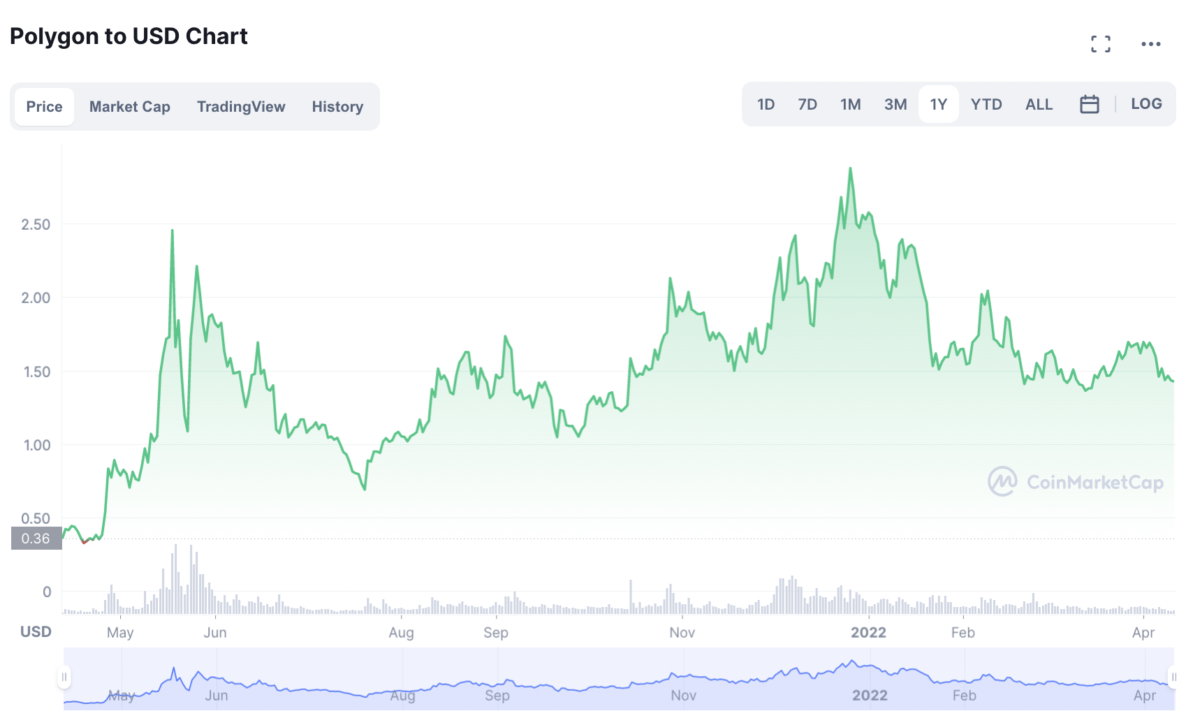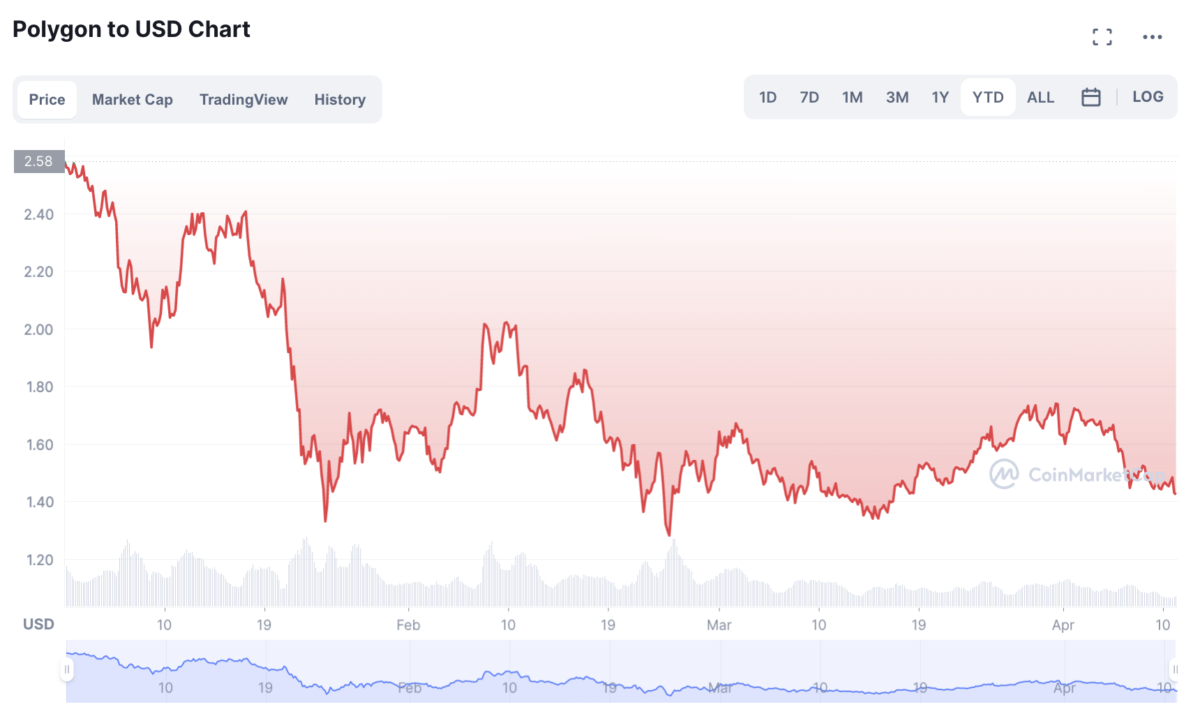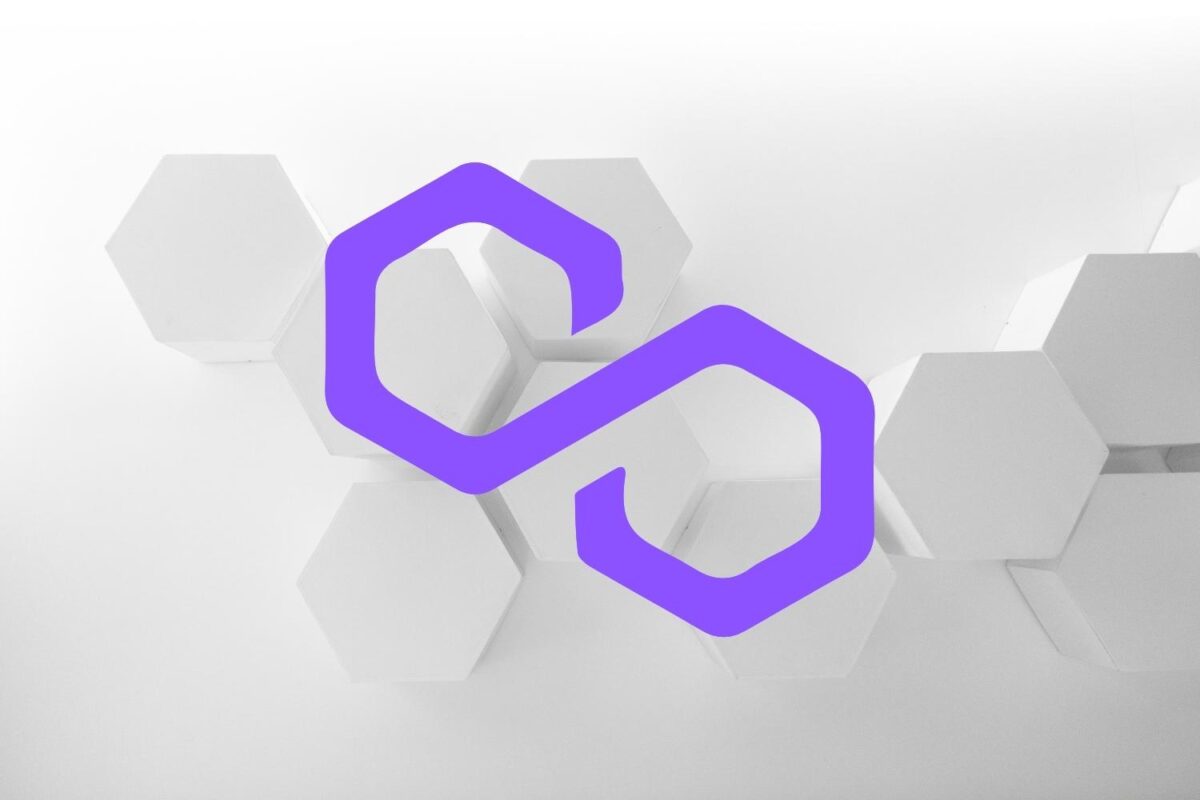- While the rest of the crypto market has recovered some of its gains over the past month, Polygon (MATIC) is still down over 50% from it’s all-time-high on December 21 of last year, and has struggled to keep pace with the rest of market.
- On December 5 2021, an unknown hacker breached the Polygon network and made off with $1.6 million ($2.3 million AUD) in MATIC tokens. This raised red flags around the security of the Polygon network.
- Polygon is a scaling solution network, also called a “Layer 2 solution” for the Ethereum (ETH) network, that allows users to access all the benefits of the Ethereum network at a fraction of the cost.
- Experts and analysts remain divided on how MATIC will perform over the coming year, with some predicting that the Polygon network will fail to adapt to new Ethereum developments and will continue to fall in price.
Even though the fears of ‘crypto winter’ are starting to calm down, crypto investors and blockchain enthusiasts still seem to be somewhat cautious about where they invest their money. The question on everyone’s mind is: which token will perform the best in this unpredictable market? Some experts point to Polygon (MATIC), while others are not so sure… Let’s find out if Polygon can actually go the distance in 2022.
Currently trading for $1.42 ($1.91 AUD) per token, Polygon (MATIC) is down 51% from its all time high of $2.92 ($4.03 AUD) on December 21 last year. With a market cap of $11.09 billion ($14.95 billion AUD) Polygon is ranked as the 20th largest cryptocurrency at the time of writing.

What is Polygon?
Polygon is one of the more ‘technical’ tokens that investors need to wrap their heads around. Launched in October 2017, Polygon (MATIC) was developed as a Layer 2 scaling solution for the Ethereum network.
Now, if that sentence has you scratching your head a little, don’t worry. Put simply, Polygon is a parallel blockchain that runs on top of the Ethereum blockchain (hence the name, Layer 2), allowing users of the Ethereum network to create new DApps, mint NFTs and transfer digital assets, without paying the absurd gas fees that Ethereum has become infamous for.
If anyone is familiar with minting NFTs on Opensea or any other platform you’ll know that the Polygon network is extremely easy to use, and slashes minting costs from approximately $50 if you were to use ETH compared to a crisp $0 if you opt for MATIC.
Did Polygon Get Hacked?
In short, yes. Polygon was the victim of an attack on December 5, 2021. The hacker, who remains unknown, managed to make off with approximately $1.6 million ($2.3 million AUD) in MATIC tokens. This event was not made public until 24 days later when Polygon shared the news in a blog post on their website.
Despite the team at Polygon claiming that all network security issues have been sufficiently addressed, these events do cast reasonable doubt on the overall security of the Polygon network and other “scaling-solution” blockchains, that tend to be far more centralised than other blockchain networks. The entire point of a blockchain is to be ultra-secure, so if a project cannot ensure this, investors should approach with caution.
In light of this, the developers at Polygon are widely recognised as some of the best in the blockchain / crypto industry and have made substantial improvements to the network. They have also personally taken on all costs associated with the recent hack.
Will Polygon Become Obsolete?
The next important thing investors need to consider is – just how long with Polygon remain useful?
As Polygon is a solution to the network congestion that has emerged from Ethereum’s slow, power-hungry Proof of Work (PoW) system, many investors and developers are worried that when Ethereum moves to a much faster Proof of Stake (PoS) system, Polygon may be rendered obsolete.
While this has proved to be a genuine concern for many investors across social media, almost all of the technical experts in the blockchain industry don’t seem to be that worried, arguing that the Polygon network and other Layer 2 solutions will always be needed for Ethereum as network adoption grows.
As reported by Cointelegraph, the co-founder of Polygon, Sandeep Nailwal stated the following:
“Even if 2.0 comes in here, that will not provide enough scalability. Next year, the proof-of-stake upgrade will keep everything the same; like Ethereum has 13 transactions per second [TPS] right now, maybe it will go to 20 TPS [after PoS], but not more than that.
So that does not add anything to scalability. And let’s say in three to five years, even if the sharding comes, we’ll have a projection of 64 shards. And with each acting at 20 transactions per second, but that’s still 1,280 transactions per second overall, right? That’s still not enough for the entire world.”
Providing some added legitimacy to this statement is Vitalik Buterin, the founder of Ethereum. When he was asked about Polygon and its role in the Ethereum project nearly 8 months ago, he responded:
“I think [Polygon] has a very reasonable strategy and I’m definitely happy that they’re part of the ecosystem.”
If we listen to the experts, we can see that the most worrying threats to Polygon don’t come from within the Ethereum network itself, rather, investors should keep a close eye on other platform-based networks such as Cardano (ADA) or Solana (SOL) that threaten to take over the role of the Ethereum. As Polygon is practically 100% ETH focused, it means that if a competitor can “flip” or overtake Ethereum sometime in the near-future, the Polygon network will be sure to suffer some heavy losses.
Polygon Short Term Price Prediction (1 Month):
Price action for Polygon, much like all digital assets year-to-date (YTD) has been undeniably bearish.

Analysts from FXStreet expect this downward trend to continue, as a variety of technical indicators are beginning to point towards a major decline in price in the near future. FXStreet’s analysts expect that Polygon may “self destruct” over the coming days as the continued downward price actions plagues the token’s trading activity. They say that investors should expect to see Polygon reach a price of $1.32 ($1.78 AUD) in the next few days, as well as a possible drop to $1.15 ($1.55 AUD) over the next week.
Polygon 1-Year Price Prediction (2023):
As always, long-term price predictions in the crypto space are difficult to make, owing to the inherent volatility of digital assets. When it comes to Polygon, experts remain mostly bullish.
Advocates of Ethereum are likely to see Polygon in a more bullish light. For example, billionaire Mark Cuban publicly declared his support for, and shared that he is invested in Polygon:
“Polygon is the first well-structured, easy-to-use platform for Ethereum scaling and infrastructure development.“
In regards to price, almost automated and algorithmic analysis remains fairly bullish on MATIC for the remainder of this year.
Analysis from GovCapital predicts that MATIC could rise to $4.25 ($6 AUD) by the beginning of next year, a whopping 138% increase from today’s price.
The outlook from Wallet Investor is quite similar, expecting that MATIC could reach a price target $4.50 ($8.47 AUD) by the start of 2023, an overall gain of 152%.
DigitalCoin is far more reserved in its analysis of MATIC, forecasting mostly “sideways” price action, predicting an end of year price target of $2.30 ($3.25 AUD), an increase of 29% from here.
Polygon 4-Year Price Prediction (2027)
Once again, Gov Capital and Wallet Investor are both extremely bullish on Polygon long-term, predicting that Polygon will be worth $11.60 ($16.38 AUD), and $12.75 ($18.01 AUD) respectively.
Automated analysis from Digital Coin is far more bearish, long-term and only expects Polygon to reach a maximum price of $4.27 ($6.03) by the beginning of 2027.
Polygon Price Prediction Conclusions:
- If investors are bullish on Ethereum (ETH), then they would be making a complimentary bet by holding some portion of their crypto portfolio in Polygon.
- Depending on what investors believe the crypto market will look like in the future, Polygon being joined at the hip to Ethereum could be seen as a major upside, or a major downside: as the value of the Ethereum network rises and falls, so too does Polygon’s.
- Ultimately, the Polygon is led by a team of experienced developers, who have worked hard to structure an organisation that is clear and transparent in its goals. If security remains a top priority and Ethereum remains a market-leading force in the crypto market, it makes sense that this project will continue to grow in value moving forward.
RISK STATEMENT
This article is of a general nature only, and is intended for solely informational purposes. This is not financial advice. Never invest more money than you can afford to lose into any crypto.
Read Next
